
The history of the Cape Colony from 1806 to 1870 spans the period of the history of the Cape Colony during the Cape Frontier Wars, which lasted from 1779 to 1879. The wars were fought between the European colonists and the native Xhosa who, defending their land, fought against European rule.
Raymond Mphakamisi Mhlaba OMSG was an anti-apartheid activist, Communist and leader of the African National Congress (ANC) also as well the first premier of the Eastern Cape. Mhlaba spent 25 years of his life in prison. Well known for being sentenced, along with Nelson Mandela, Govan Mbeki, Walter Sisulu and others in the Rivonia Trial, he was an active member of the ANC and the South African Communist Party (SACP) all his adult life. His kindly manner brought him the nickname "Oom Ray".

The Eastern Cape is one of the nine provinces of South Africa. Its capital is Bhisho, but its two largest cities are East London and Gqeberha. Due to its climate and nineteenth century towns, it is a common location for tourists. It is also known for being home to many anti-apartheid activists, the most famous being Nelson Mandela hailing from the province.
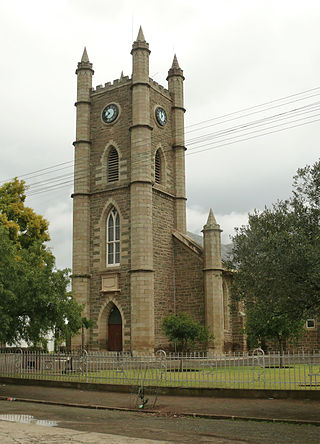
Adelaide is a rural town and farming area in the province of Eastern Cape, South Africa. Adelaide is situated at the foothills of the Great Winterberg mountain range, 22 kilometres (14 mi) east of Bedford and 37 kilometres (23 mi) west of Fort Beaufort.

Gqeberha, previously named Port Elizabeth, and colloquially referred to as P.E., is a major seaport and the most populous city in the Eastern Cape province of South Africa. It is the seat of the Nelson Mandela Bay Metropolitan Municipality, South Africa's second-smallest metropolitan municipality by area. It is the sixth-most populous city in South Africa and is the cultural, economic and financial hub of the Eastern Cape.

Qonce, or King William's Town, is a town in the Eastern Cape province of South Africa along the banks of the Buffalo River. The town is about 60 kilometres (37 mi) northwest of the Indian Ocean port of East London. It has a population of around 35,000 inhabitants and forms part of the Buffalo City Metropolitan Municipality.
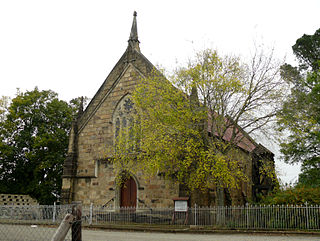
Bedford or Nyarha is a rural town in the centre of the Eastern Cape province of South Africa. It was established in the mid-19th century when Sir Andries Stockenstroom sold portions of land from his farm Maastroom to raise funds for the restoration of his library, which had been burnt by British soldiers mistrustful of his attempts to broker peace in one of the Cape Frontier Wars. The farm is still there and open for visitors.

Beaufort West is a town in the Western Cape province in South Africa. It is the largest town in the arid Great Karoo region, and is known as the "Capital of the Karoo". It forms part of the Beaufort West Local Municipality, with 34,085 inhabitants in 2011.
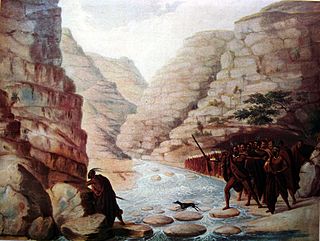
The Xhosa Wars were a series of nine wars between the Xhosa Kingdom and the British Empire as well as Trekboers in what is now the Eastern Cape in South Africa. These events were the longest-running military resistance against European colonialism in Africa.
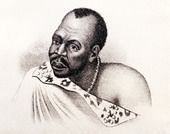
Hintsa ka Khawuta, also known as Great or King Hintsa, was the king of the Xhosa Kingdom, founded by his great ancestor, King Tshawe. He ruled from 1820 until his death in 1835. The Xhosa Kingdom, at its peak, during his reign stretched from Mbhashe River, south of Mthatha to the Gamtoos River, in the Southern Cape.
Healdtown Comprehensive School is a Methodist school located near Fort Beaufort, Eastern Cape Province, South Africa. It was established in 1855 and assuming its current name in 1994, having been known for most of its history as simply "Healdtown". The founder was John Ayliff, a Wesleyan Methodist missionary from England. It was closed in 1865 and reopened in 1867 as a center for theological and teacher training. In 1880 the theological school was moved to another place, and the Teacher Training School remained. Girls were admitted to study there in 1898. In 1925 a high school course was added. The government took over the school in 1956 due to the Bantu Education Act of 1953. The hostels remained in the hands of the Methodist Church. 761 students used the hostels in 1967.

Somerset East, officially renamed KwaNojoli in March 2023, is a town in the Blue Crane Route Local Municipality in the Eastern Cape, South Africa. It was founded by Lord Charles Somerset in 1825.
Chief Mbuso Alphin Mqalo was the chief of the Amakhuze Tribe in Alice, South Africa and the oldest chief of the Rharhabe Kingdom. His reign was from the early 1960s to 2006.
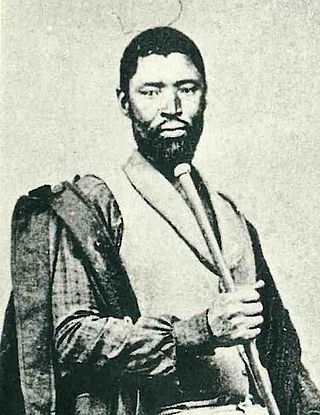
Mgolombane Sandile was a ruler of the Right Hand House of the Xhosa Kingdom. A dynamic leader, he led the Xhosa armies in several of the Xhosa-British Wars.
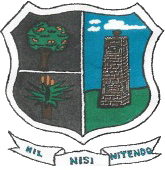
Nkonkobe Local Municipality was an administrative area in the Amatole District of the Eastern Cape in South Africa. The municipality is named after the Winterberg mountain range, Nkonkobe in isiXhosa. The seat, as well as most offices, of the Municipality are in Fort Beaufort, but the Council's chambers in Alice are generally used for council meetings, being better equipped. Other towns served by the municipality are Seymour, Balfour, Hogsback and Middledrift. After municipal elections on 3 August 2016 it was merged into the larger Raymond Mhlaba Local Municipality.
Fort Beaufort Hospital is a Provincial government funded hospital in the Raymond Mhlaba Local Municipality area in Fort Beaufort, Eastern Cape in South Africa.
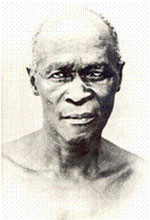
Jongumsobomvu Maqoma was a Xhosa chief and a commander of the Xhosa forces during the Cape Frontier Wars. Born in the Right Hand House of the Xhosa Kingdom, he was the older brother of Chief Mgolombane Sandile and nephew to King Hintsa. In 1818, he commanded the forces of his father, Ngqika, who seemingly was trying to overthrow the government and become the king of the Xhosa nation. In 1822, he moved to the so-called neutral zone to take land but was expelled by the British troops. and Chief Maqoma his Know Usenam Ningi

Raymond Mhlaba Municipality is a local municipality, in the Eastern Cape province of South Africa. It was established after the August 2016 local elections by merging the Nkonkobe and Nxuba local municipalities.

The Eighth Xhosa War was a war between the British Empire and Xhosa as well as Khoikhoi forces, between 1850 and 1853. It was the eighth of nine Xhosa Wars.



















